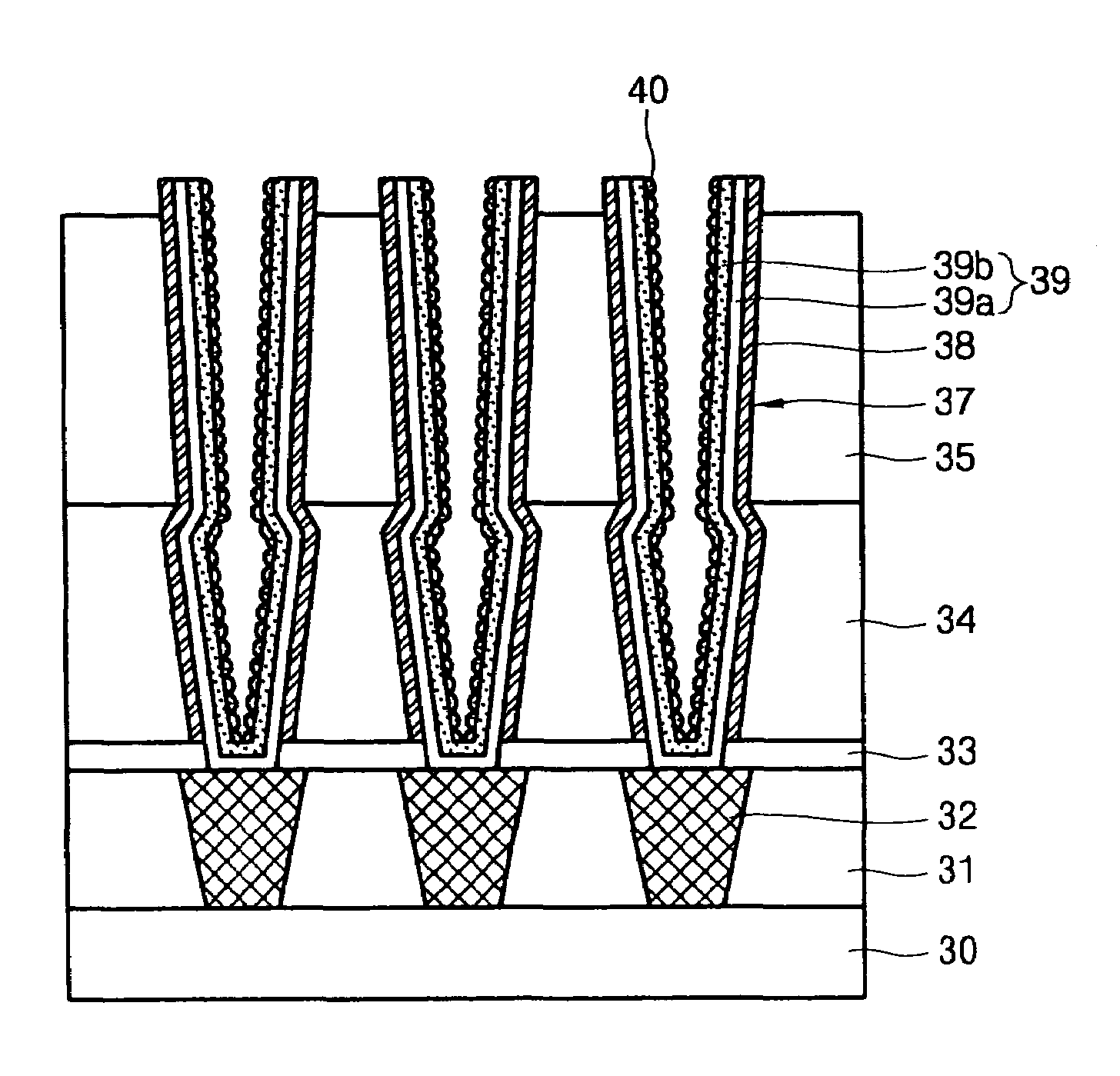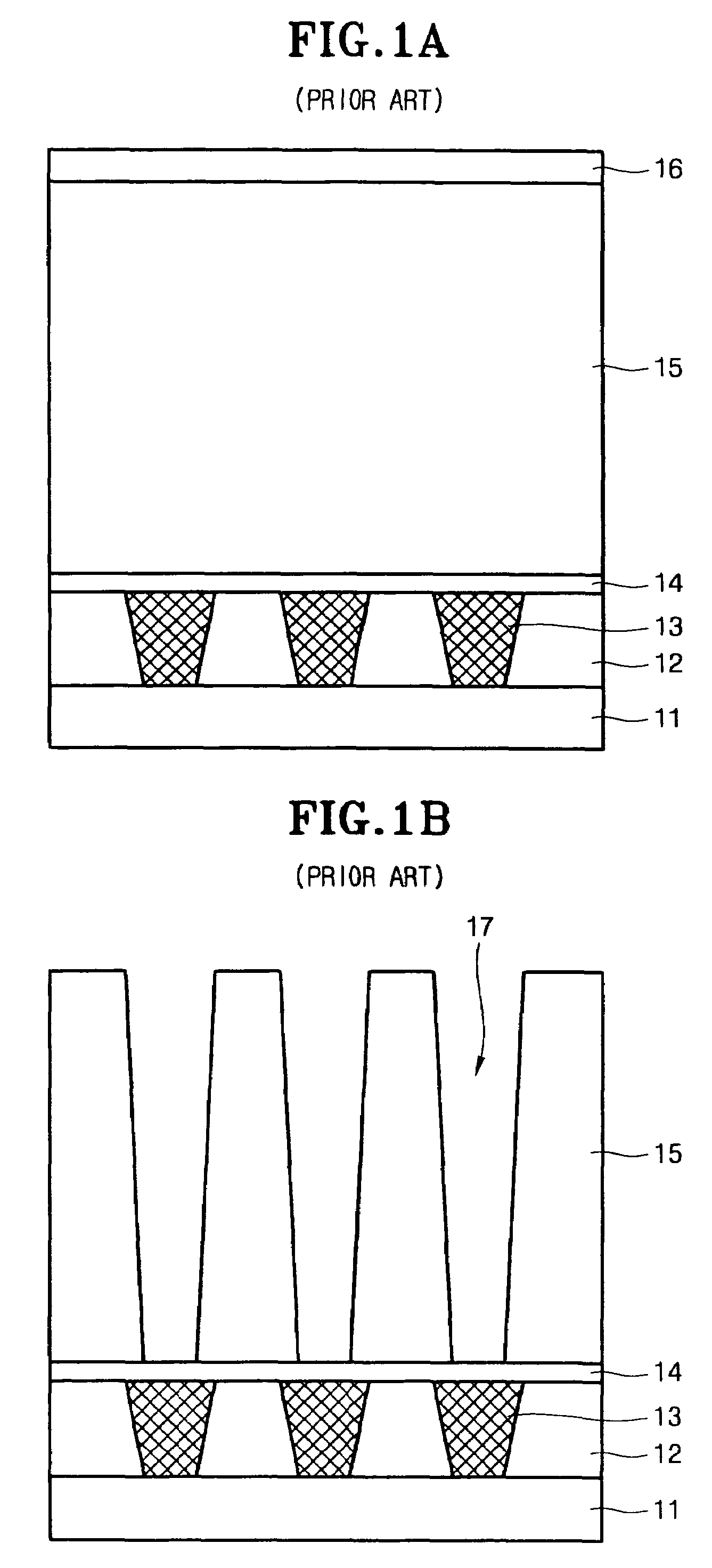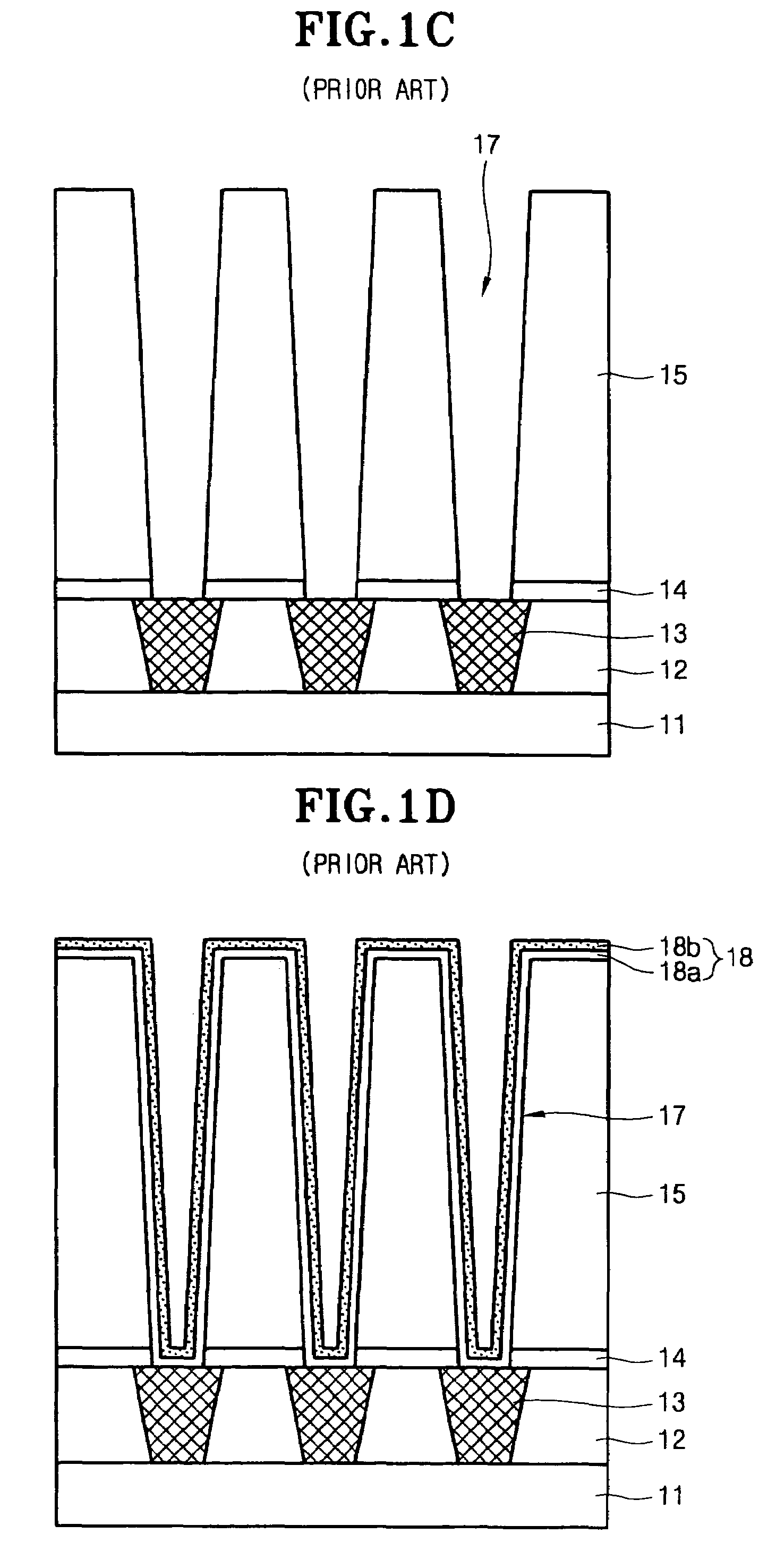Method for forming capacitor of semiconductor device
a technology of semiconductor devices and capacitors, which is applied in the direction of capacitors, semiconductor devices, electrical devices, etc., can solve the problems of long time-consuming and laborious, inferior characteristics of capacitors having flexural electrodes, and difficulties in enabling capacitors to be used, so as to increase the effective surface area
- Summary
- Abstract
- Description
- Claims
- Application Information
AI Technical Summary
Benefits of technology
Problems solved by technology
Method used
Image
Examples
Embodiment Construction
[0039]Hereinafter, a preferred embodiment of the present invention will be described with reference to the accompanying drawings. In the following description and drawings, the same reference numerals are used to designate the same or similar components, and so repetition of the description on the same or similar components will be omitted.
[0040]FIGS. 3a through 3h are cross-sectional views sequentially showing steps of a process of forming a capacitor according to the present invention.
[0041]In the step shown in FIG. 3a, an insulating interlayer 31 having plugs 32 is formed on a semiconductor substrate 30 according to a known process. Then, an etch stop layer 33, a first oxide layer 34, a second oxide layer 35, and a hard mask layer 36 are formed in sequence on the insulating interlayer 31 having the plugs 32.
[0042]Preferably, the etch stop layer 33 is a nitride film having a thickness of 400˜1000 Å. Also, the first oxide layer 34 is a phosphor silicate glass (PSG) film, a boro-pho...
PUM
 Login to View More
Login to View More Abstract
Description
Claims
Application Information
 Login to View More
Login to View More - R&D
- Intellectual Property
- Life Sciences
- Materials
- Tech Scout
- Unparalleled Data Quality
- Higher Quality Content
- 60% Fewer Hallucinations
Browse by: Latest US Patents, China's latest patents, Technical Efficacy Thesaurus, Application Domain, Technology Topic, Popular Technical Reports.
© 2025 PatSnap. All rights reserved.Legal|Privacy policy|Modern Slavery Act Transparency Statement|Sitemap|About US| Contact US: help@patsnap.com



